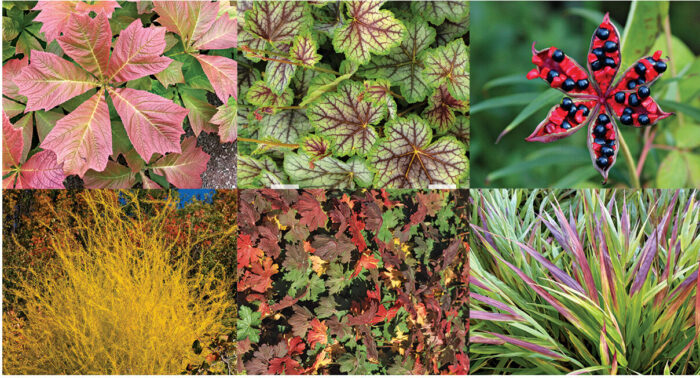
People flock to fall color hot spots every year to experience the best the season has to offer. The deciduous trees that grow across North America rarely disappoint. Year after year, expectations are met as familiar colors usher in the end of another season. We admire the fall displays in our native forests partly because they happen en masse. The season seems to take place in acts, with one species yielding to another as each reaches its peak color.
As it should be, the lion’s share of attention in fall goes to deciduous trees. However, we don’t often take the time to appreciate the herbaceous perennials that can display wonderful color at this time of year. There are many plants both familiar and unfamiliar that can add an extra bit of excitement to our gardens as they transform with the changing weather.
The plants covered in this article are just the beginning. Some of them are interesting because of their colorful fall foliage, while others have wonderful seed heads or vibrant stem colors. When you take the time to notice all that herbaceous perennials have to offer in fall, it brings a whole new layer of interest to one of the best gardening seasons.
Many of the plants mentioned here are season extenders, bridging the gap between fall and winter. In fact, even though they are herbaceous perennials, several offer true four-season interest. I encourage you to take a walk through your garden and consider whether you are fully embracing the broad seasonality some perennials can offer. Perhaps the addition of one or more of these plants will be just what your garden needs.
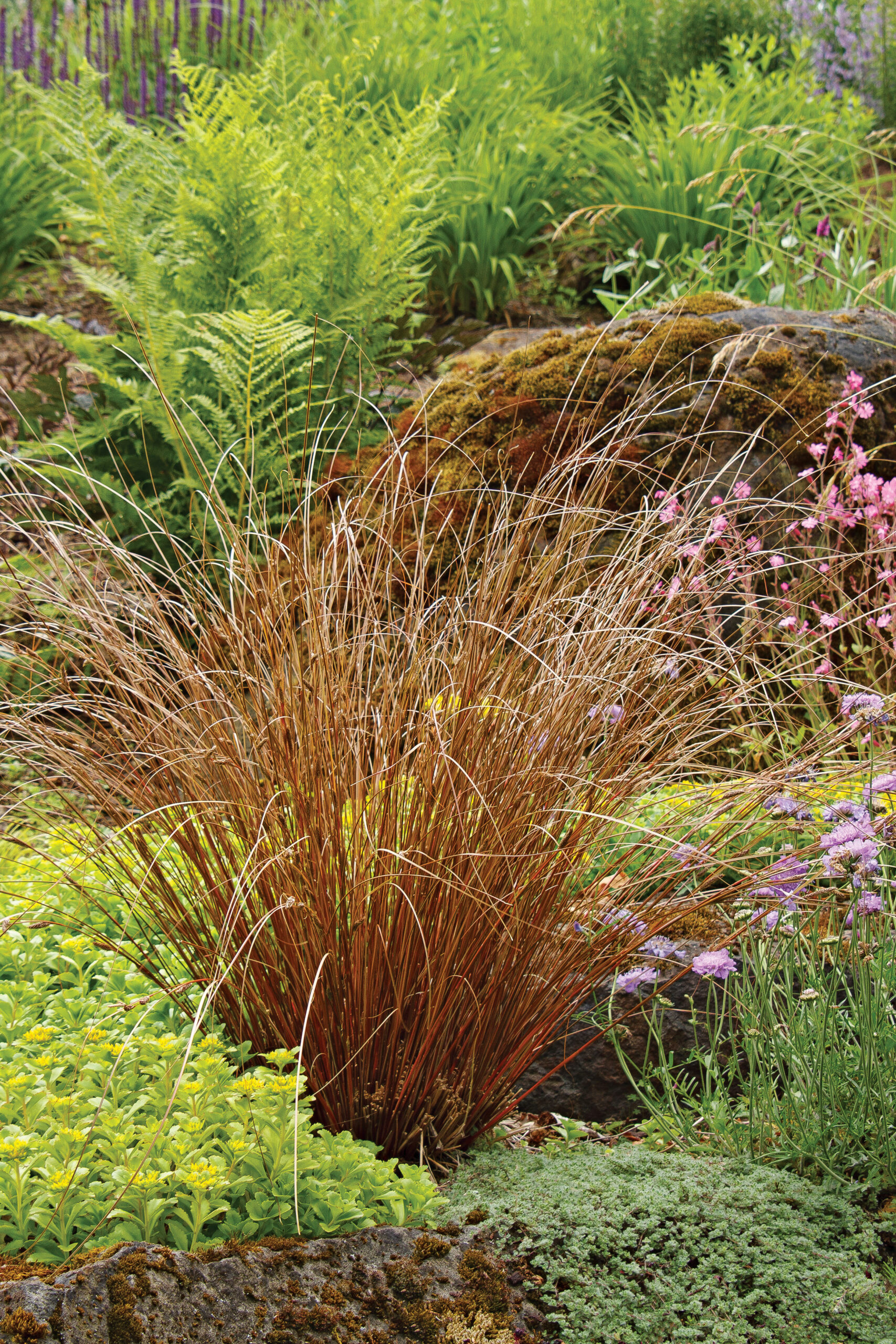
1. ‘Red Rooster’ leatherleaf sedge shines with coppery red highlights
Name: Carex buchan-anii ‘Red Rooster’
Zones: 6–9
Size: 1½ to 2 feet tall and 1 to 1½ feet wide
Conditions: Full sun to partial shade; medium to moist soil
Native range: New Zealand
If a plant’s tag mentions that the plant is native to New Zealand, you can almost be certain it will not last long in hot and humid Southern gardens. ‘Red Rooster’ leatherleaf sedge is one exception to that rule. This cultivar grows well in my Southern garden and will even seed around somewhat. It has a cool-season growth cycle, which means spring and fall are times of active growth. ‘Red Rooster’ has coppery red foliage that intensifies in autumn. Good drainage and adequate moisture during times of active growth will help ensure its survival. This plant likes to spend at least some of the day in the sun, with afternoon shade preferred in hotter areas. If you are not in a region where this sedge is hardy, I recommend growing it as an annual in a container. Its upright habit and unique color make it blend well with trailing annuals of almost any color.
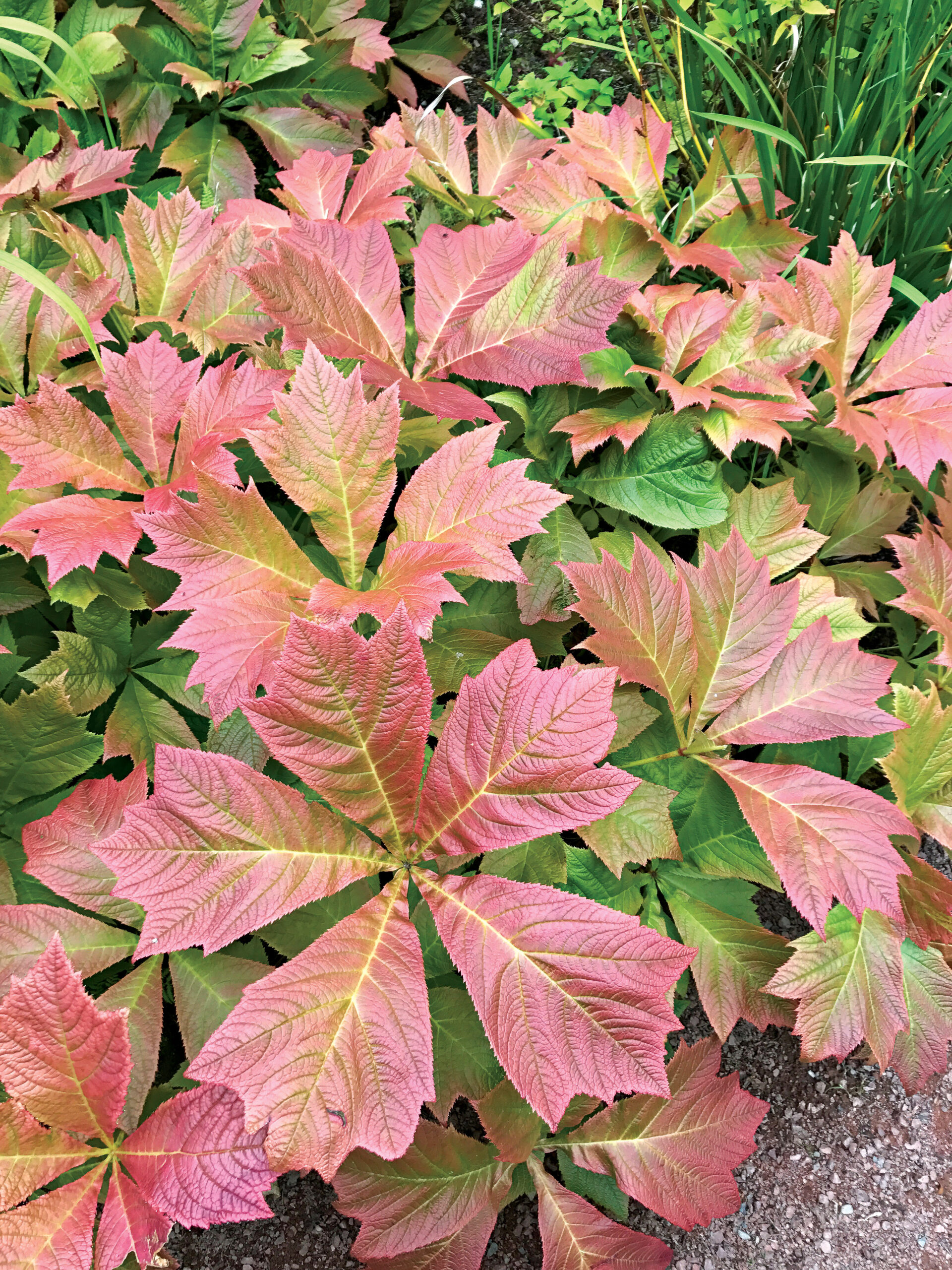
2. Bronze-leaf rodgersia’s glossy leaves stain red in autumn
Name: Rodgersia podophylla
Zones: 5–8
Size: 3 to 5 feet tall and 3 to 4 feet wide
Conditions: Partial shade; medium to moist soil
Native range: Eastern Asia
Bronze-leaf rodgersia is a big and bold clump-forming perennial native to woodlands and shady slopes in Korea and Japan. This species achieves a substantial size and forms a spreading mound. Creamy-white flowers born in clusters look beautiful in summer. However, its large, coarsely toothed, bronze-green leaves are the best reason to grow this plant. Without a doubt, it’s best suited for regions of the country with less heat and humidity, but it can be a short-lived perennial in warmer areas. For those who can grow it well, plants receiving adequate moisture through the growing season will reward them with a beautiful show of autumn foliage. Fall color can vary among coppery brown, red, and yellow, depending on growing conditions.
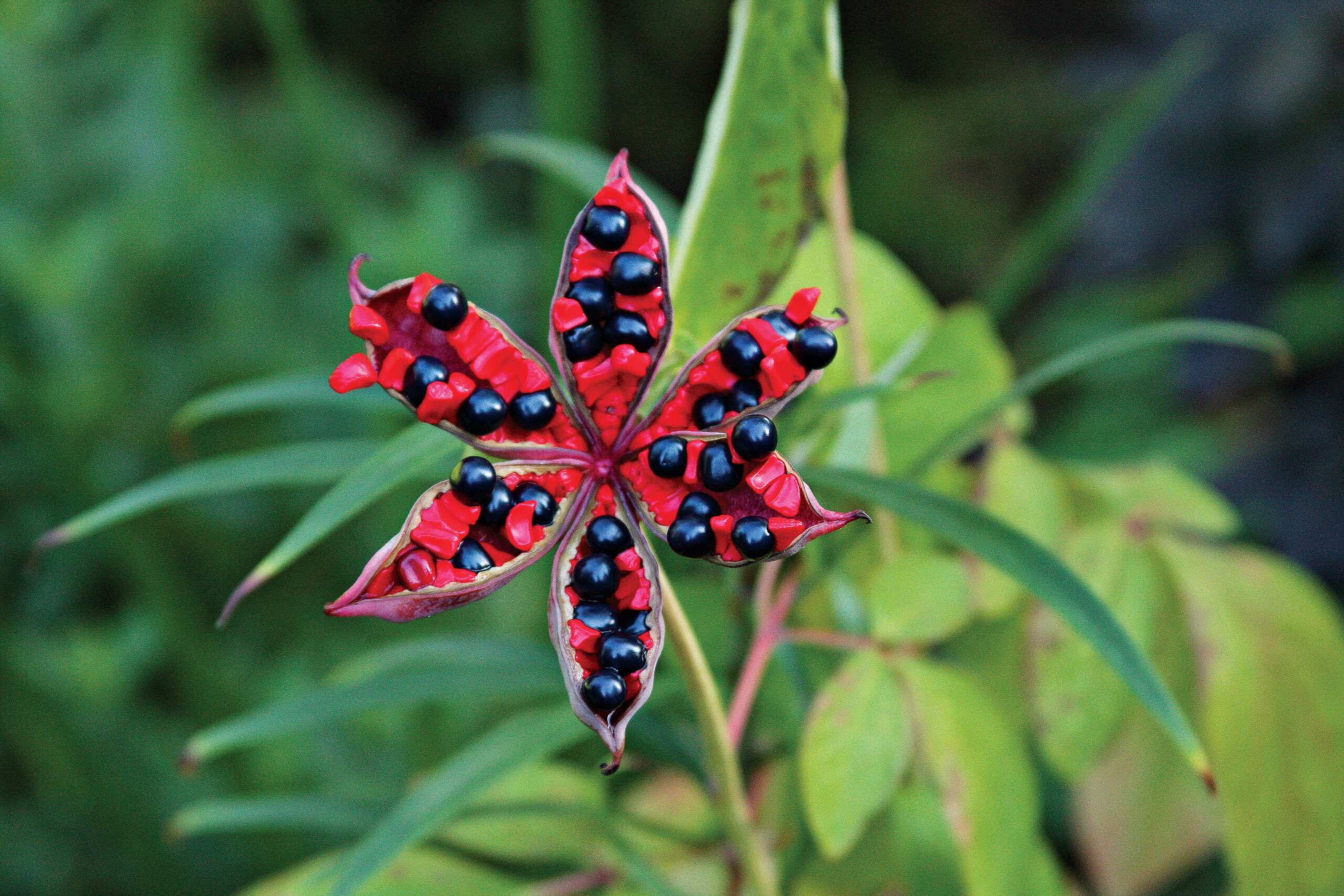
3. Japanese forest peony’s flowers transform into alien-looking seed heads
Name: Paeonia obovata
Zones: 3–8
Size: 1 to 2 feet tall and wide
Conditions: Partial shade; medium soil
Native range: Eastern Asia
So-called species peonies are not as common in gardens as other large-flowering herbaceous selections. However, Japanese forest peony deserves attention and should be grown more. You most likely will not see its white to rose-purple flowers in a wedding bouquet, but they are beautiful. Unlike with other peonies, one huge mistake you could make is to cut off the seed heads after the flowers fade. In late summer or early fall, the seed heads begin to split, forming the shape of a court jester’s hat. When the pods open, they reveal gleaming, blue-black fertile seeds nestled among infertile vividly red seeds.
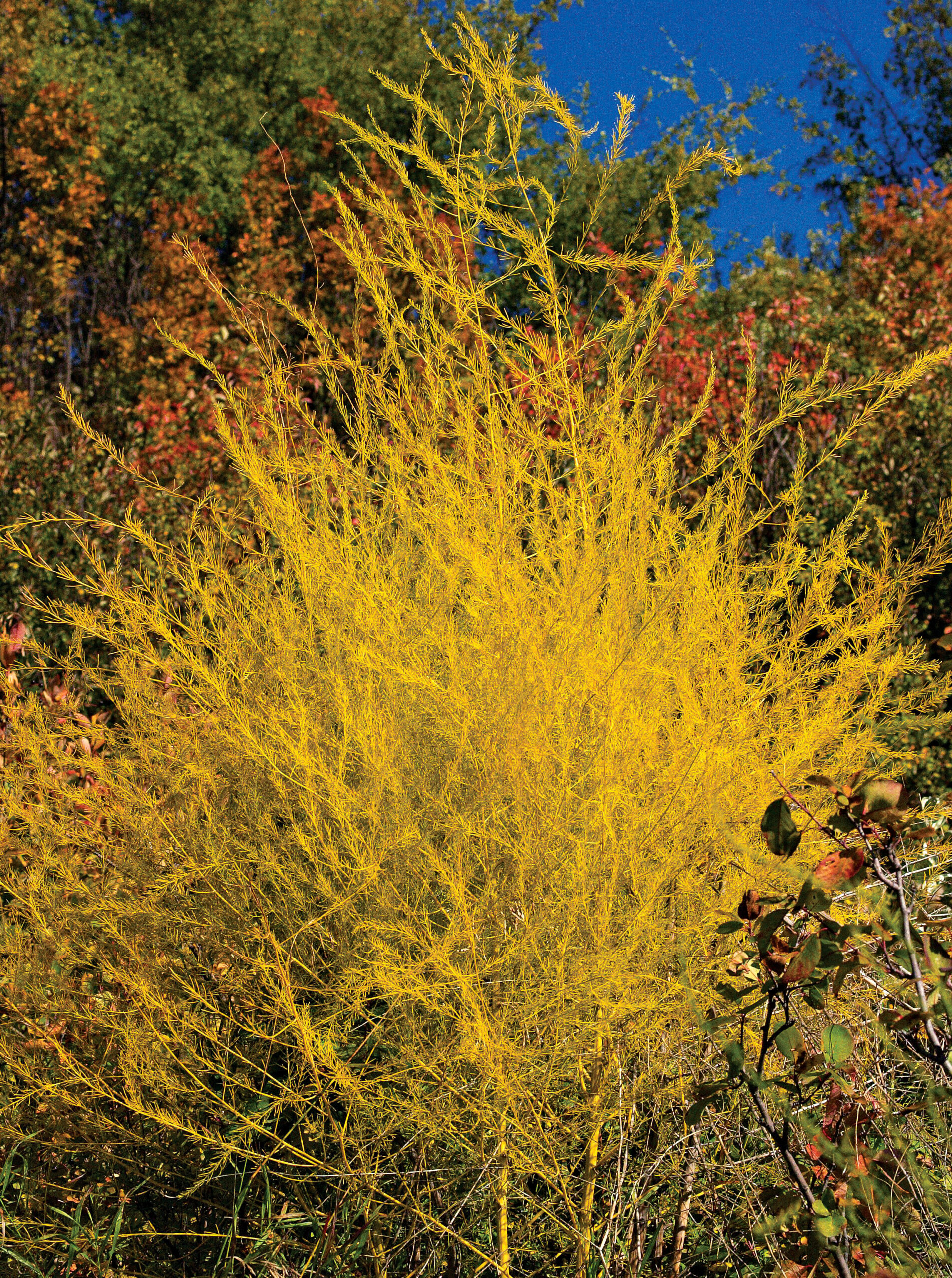
4. Asparagus’s feathery foliage lights up like the setting sun in fall
Name: Asparagus officinalis
Zones: 3–10
Size: 3 to 8 feet tall and 3 to 6 feet wide
Conditions: Partial shade; medium soil
Native range: Europe, western Asia, northern Africa
It’s not always the expected that is memorable. The unexpected grabs our attention and always elicits a response. To many, asparagus is an unassuming perennial vegetable. Who thinks about asparagus after its tender shoots have been harvested? Some keen gardeners use its fernlike foliage in floral displays, and the texture is stunning. However, asparagus’s fall color can range from school bus yellow to deep gold. Both the stems and leaves turn shades of yellow as the weather shifts. If you are careful not to let plants get bone dry in the later part of the season, you will be rewarded with long-lasting seasonal color.
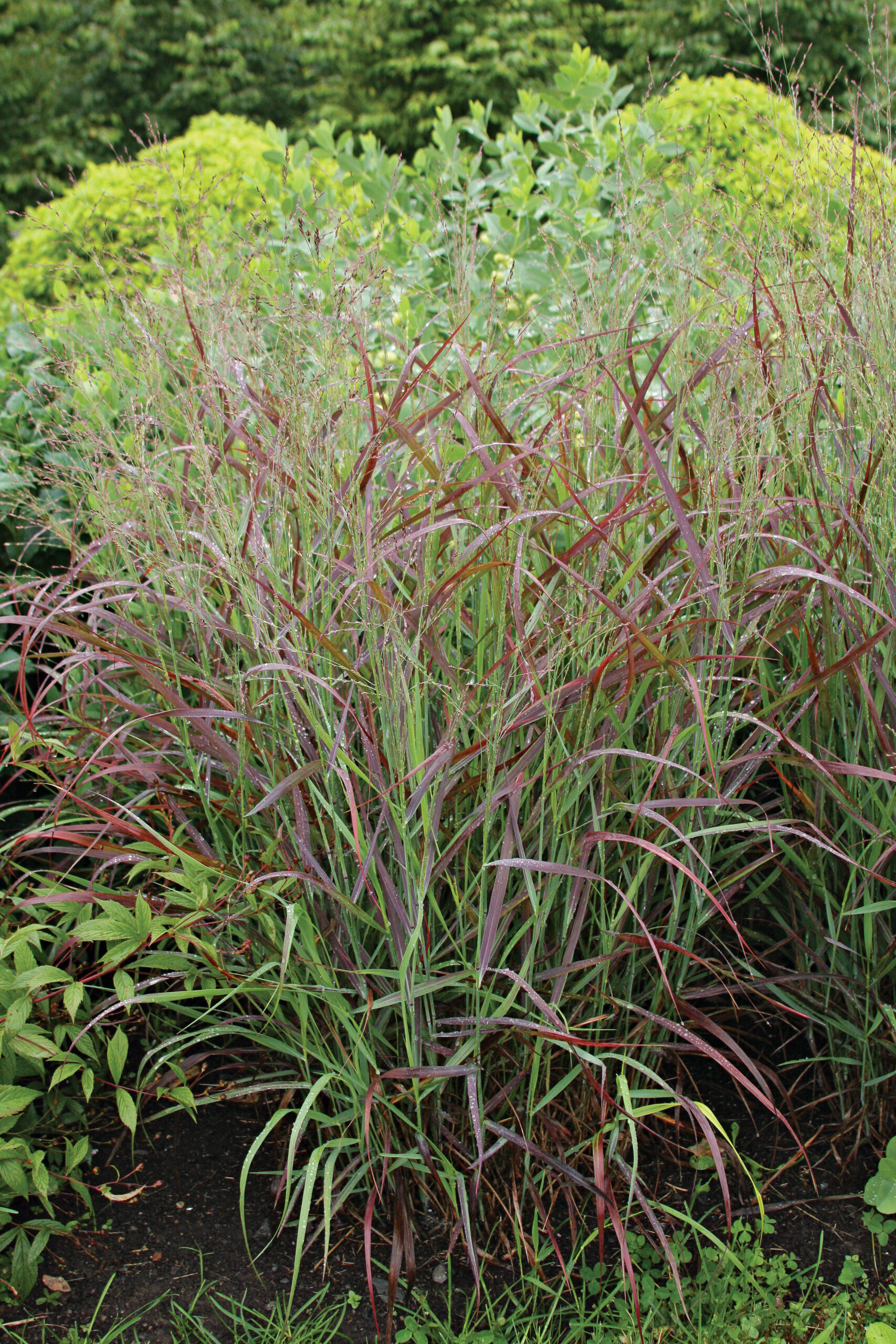
5. ‘Cheyenne Sky’ switchgrass boasts dark maroon leaf tips
Name: Panicum virgatum ‘Cheyenne Sky’
Zones: 4–9
Size: 3 feet tall and 1½ feet wide
Conditions: Full sun; medium to well-drained soil
Native range: North America
Any switchgrass will thrive in well-drained soil with adequate moisture. However, those conditions are not what I would recommend. Switchgrass is very easygoing and will adapt to less-than-ideal growing conditions. In fact, when placed in full sun with poor soil and given infrequent moisture, plants will be shorter, more upright, and less floppy. One of the standout selections of this native grass is ‘Cheyenne Sky’. This cultivar is shorter than the species and has an upright, vase-shaped habit if you don’t pamper it too much. This is one of the best switchgrasses for year-round interest. You will be rewarded in the later part of the year as the blue-green foliage turns wine red. As fall progresses, plants produce attractive seed heads that are held just above the foliage.
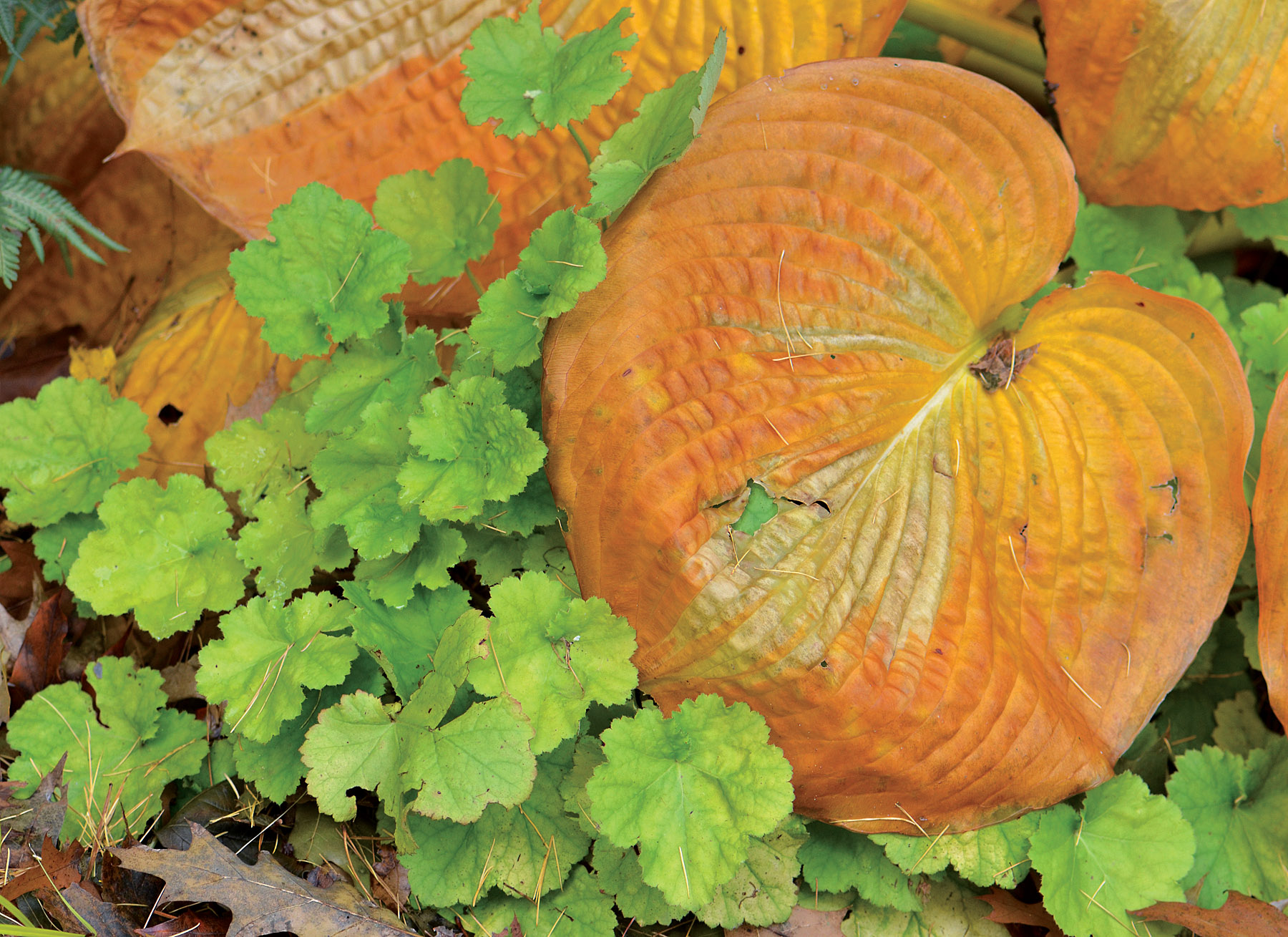
6. Many hostas fade in fall, but ‘Hudson Bay’ turns a bright golden color
Name: Hosta ’Hudson Bay’
Zones: 3–9
Size: 2 feet tall and 2 feet wide
Conditions: Partial shade to full shade; medium soil
Native range: Hybrid
I am guilty of only thinking about hostas in the spring; their fresh foliage seems to usher in the new season. With all the different sizes, leaf colors, and variations on the market, it is easy to crown them North America’s #1 shade perennial. If you have an ounce of shade, you are sure to find a hosta you can get at least partially excited about. A few hostas have outstanding fall color; however, ‘Hudson Bay’ stands out. The normally tricolored-green leaves undergo a beautiful transition in autumn to richly golden hues. As a bonus, the leaves’ deep venation becomes even more noticeable during the final act of the season.
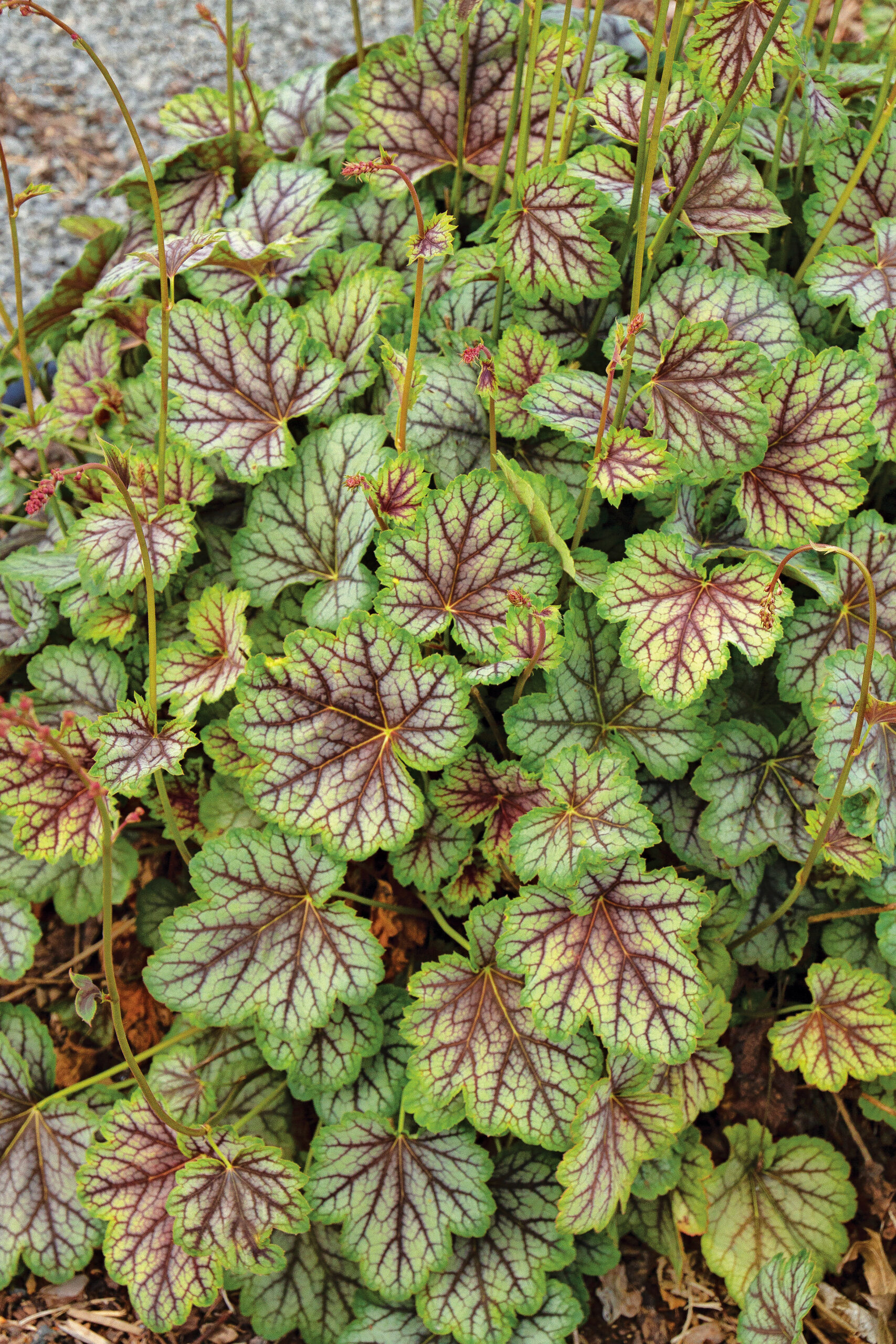
7. American heuchera has purple-veined leaves that last almost until winter
Name: Heuchera americana
Zones: 4–9
Size: 1 to 2 feet tall and 1 to 1½ feet wide
Conditions: Full sun to partial shade; medium soil
Native range: Eastern North America
I love seeing heuchera species as I hike around the native woodlands of the eastern United States. American heuchera is one of my favorites. In native stands you will see a variety of plants with different modeling on the leaves, many of which could be garden-worthy selections. Adequate moisture and afternoon shade are appropriate for most northern gardeners, with more shade needed as you move south. Providing these conditions will keep foliage fresh and plants healthy when fall arrives. As the weather cools, the veining and color intensify, resulting in a mosaic of green, deep red, and silver.
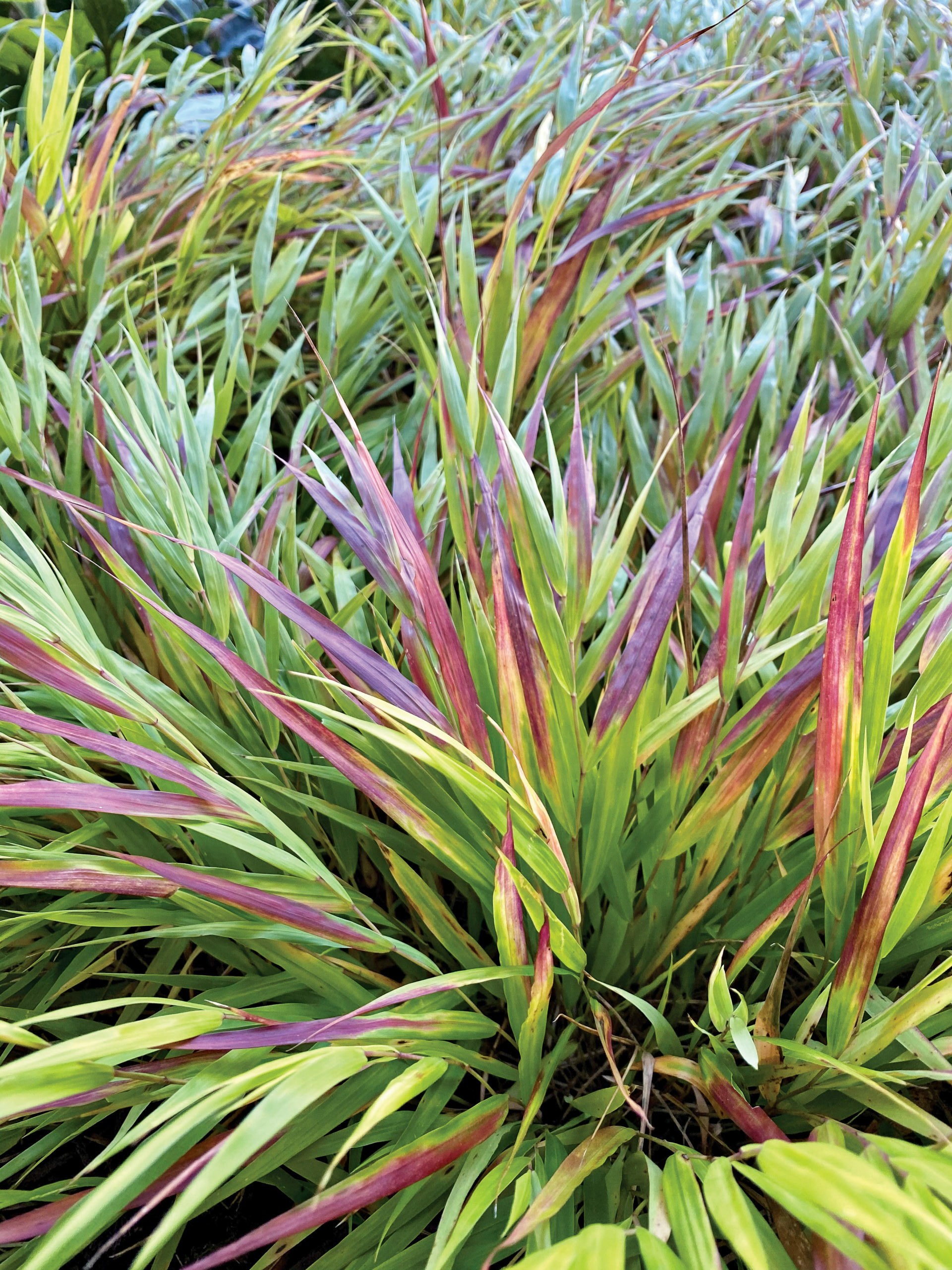
8. Streaks of bright red and purple decorate ‘All Gold’ Japanese forest grass
Name: Hakonechloa macra ‘All Gold’
Zones: 4–9
Size: 1½ feet tall and 1 to 2 feet wide
Conditions: Partial to full shade; medium soil
Native range: Japan
Most seasoned gardeners have tried to grow a cultivar or two of Japanese forest grass. The hardiness zone range usually given can be misleading. I have seen nice specimens in the Midwest, New England, and as far north as Minneapolis—and spectacular examples in the Pacific Northwest. I’ve also seen it struggle in other regions. But even if you live in a warmer area, you need to give it a shot. I have found success with ‘All Gold’ in the South by providing adequate moisture in nearly full shade. My clump of ‘All Gold’ has grown slowly and rewards me each fall with a wonderful color change. The tips of the gracefully arching foliage transform from chartreuse-gold to red as cool weather sets in. What could be spookier for fall than a grass with leaves that look like they were dipped in blood?
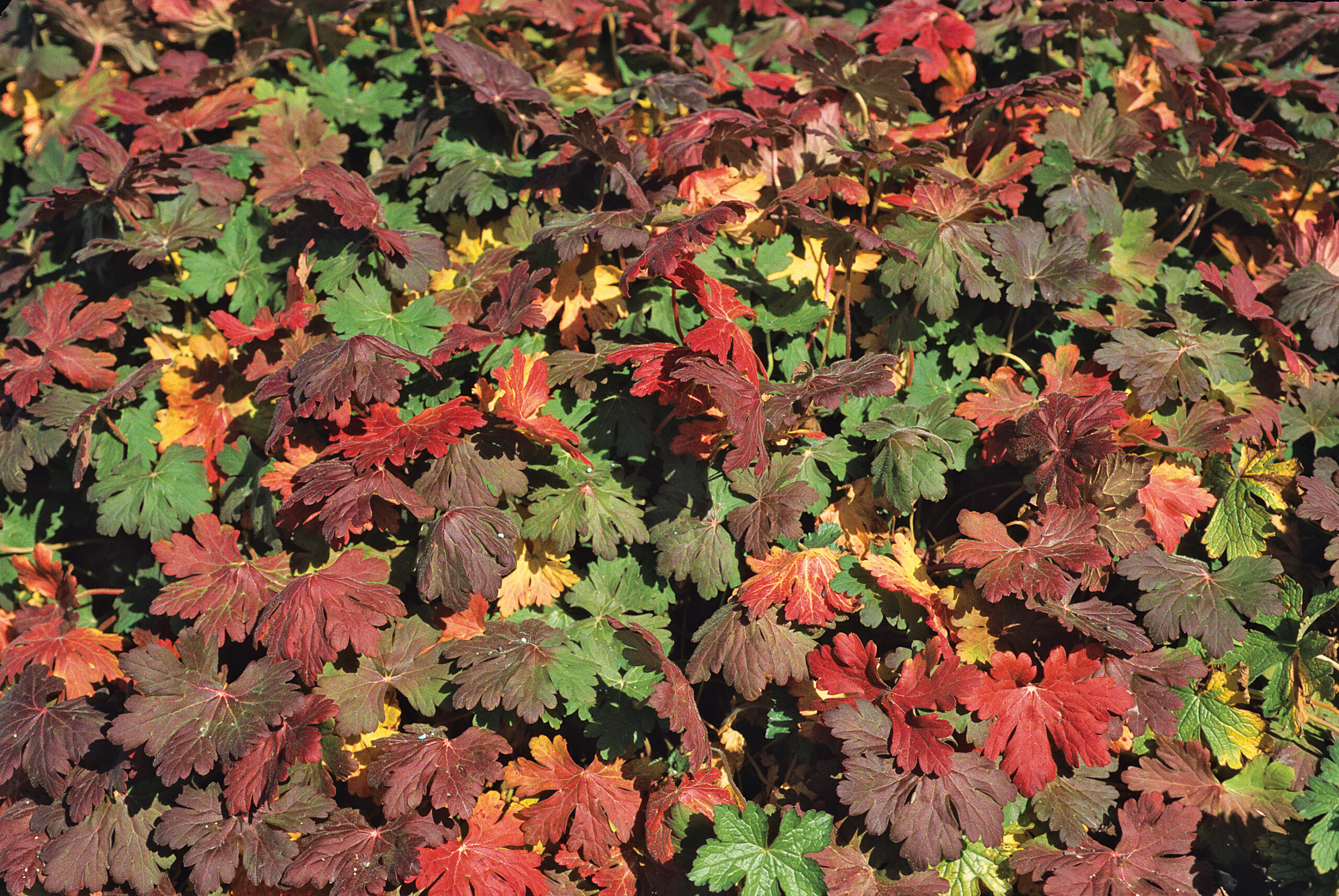
9. ‘Ingwersen’s Variety’ geranium bursts into a colorful mosaic of matted foliage
Name: Geranium macrorrhizum ‘Ingwersen’s Variety’
Zones: 4–8
Size: 1 to 1½ feet tall and 1 to 2 feet wide
Conditions: Full sun to partial shade; medium to well-drained soil
Native range: Southern Europe
Perhaps one of the easiest hardy geraniums for gardeners to grow, ‘Ingwersen’s Variety’ can form a thick weed-resistant ground cover over time. Plants can handle sun in regions with cooler summers but will appreciate some shade in locations with more heat and humidity. The leaves are fragrant and have a distinct aroma when crushed. One-inch soft pink flowers that are held above the foliage appear in early summer and are quite attractive. All plants in this species have some fall coloration; however, ‘Ingwersen’s Variety’ has some of the best. It has glossier leaves than others, which leads to a more spectacular fall display.
Fall cleanup doesn’t have to be a chore
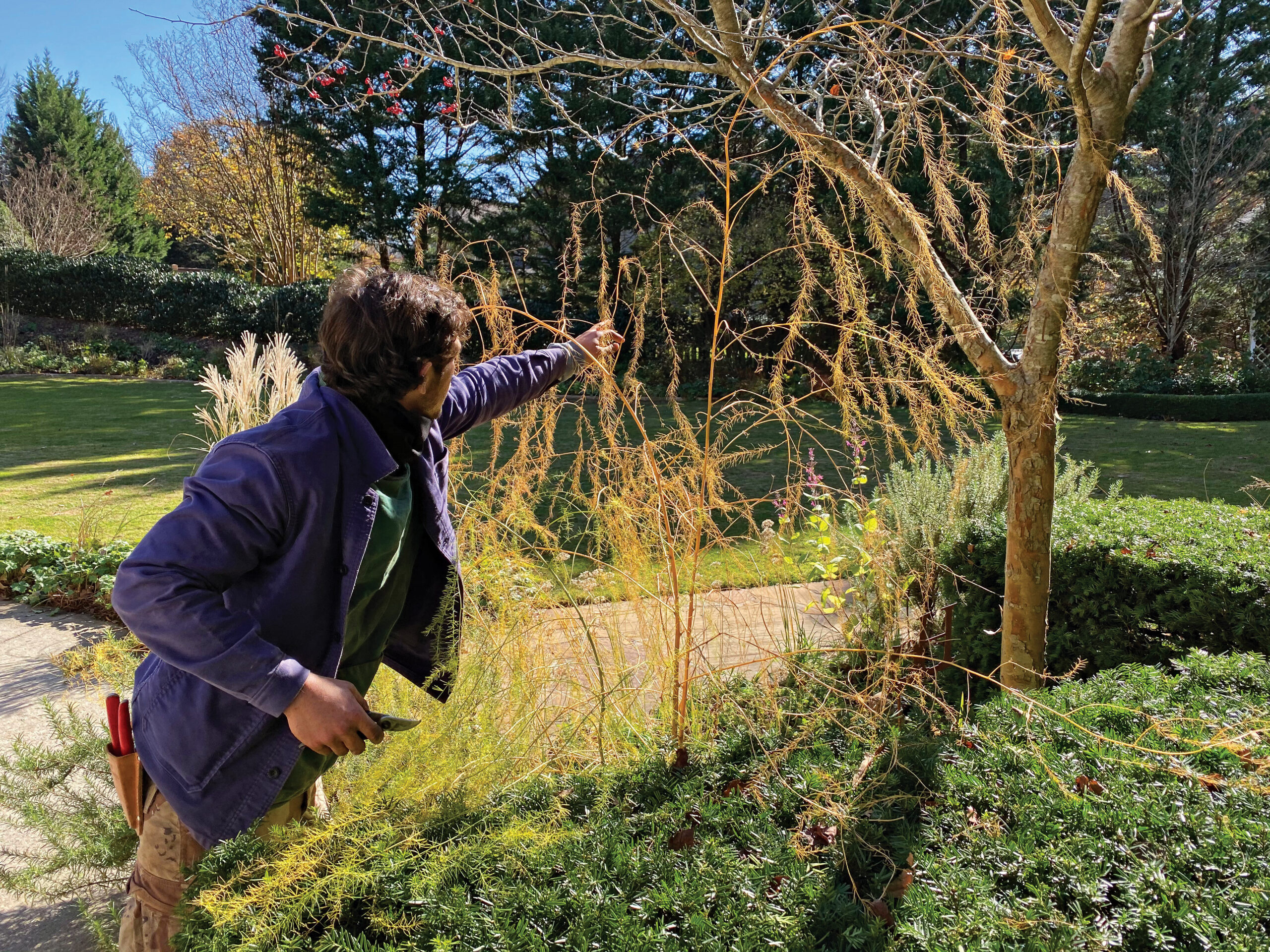
Don’t put a large amount of pressure on yourself to fully tidy up your fall garden. In areas primarily composed of herbaceous perennials, my fall routine consists almost exclusively of leaf blowing. My goal is to keep large amounts of leaves from smothering plants and to remove any diseased plant material I see. In lieu of tidiness, I prefer to enjoy the aesthetics of my garden as it decays into winter. Many perennials, including those featured here, can and should be appreciated long after fall. In many cases, spring cleanup is preferable for herbaceous perennials. Overwintering insects often benefit when deteriorating stems are kept up in the garden as long as possible.
Tasks to remember
- Remove large amounts of leaves from around herbaceous perennials.
- Get rid of plant material that is diseased or dying.
- Don’t cut back perennials in fall.
- Leave the stems of herbaceous plants up as long as possible to benefit overwintering insects.
Designing in sun and shade for outstanding fall color
Full Sun: Bold shades don’t fade in bright light
In this full-sun design, ‘Cheyenne Sky’ switchgrass is a semiformal element that stands out in the front of the garden. It’s surrounded by ‘Pure Joy’ sedum, which is low-growing and has pale pink flowers in fall. The seed heads from PowWow® Wild Berry coneflower lend structure to the design. Flashes of gold burst from ‘Angelina’ sedum and asparagus. These plants won’t just provide interest in autumn, but throughout the year.
- Little Lime® panicle hydrangea (Hydrangea paniculata ‘Jane’, Zones 3–8)
- Asparagus
- PowWow® Wild Berry coneflower (Echinacea purpurea ‘PAS7O2917’, Zones 3–9)
- ‘Cheyenne Sky’ switchgrass
- ‘Angelina’ sedum (Sedum rupestre ‘Angelina’, Zones 5–9)
- ‘Pure Joy’ sedum (Hylotelephium ‘Pure Joy’, Zones 3–9)
Shade: Textures and colors contrast to brighten low-light areas
Many of the plants featured in this article perform best with at least some shade. In this design, bold foliage textures, like those of American heuchera and autumn fern, contrast with finer textures from ‘All Gold’ Japanese forest grass and willow-leaf bluestar. Gold fall color stands out from willow-leaf bluestar against the deep red leaves of oakleaf hydrangea and autumn fern.
- Oakleaf hydrangea (Hydrangea quercifolia, Zones 5–9)
- Willow-leaf bluestar (Amsonia tabernaemontana var. salicifolia, Zones 3–9)
- ‘Hudson Bay’ hosta
- ‘All Gold’ Japanese forest grass
- American heuchera
- Autumn fern (Dryopteris erythrosora, Zones 5–8)
Andy Pulte, Ph.D., is a faculty member in the plant sciences department at the University of Tennessee.
Illustrations: Elara Tanguy
Sources
- Bluestone Perennials, Madison, OH 800-852-5243; bluestoneperennials.com
- Broken Arrow Nursery, Hamden, CT 203-288-1026; brokenarrownursery.com
- Nature Hills Nursery, Omaha, NE 888-864-7663; diggingdog.com
- New Moon Nursery, Woodstown, NJ 888-998-1952; newmoonnursery.com
- Plant Delights Nursery, Raleigh, NC 919-772-4794; plantdelights.com
Fine Gardening Recommended Products

A.M. Leonard Deluxe Soil Knife & Leather Sheath Combo
Fine Gardening receives a commission for items purchased through links on this site, including Amazon Associates and other affiliate advertising programs.
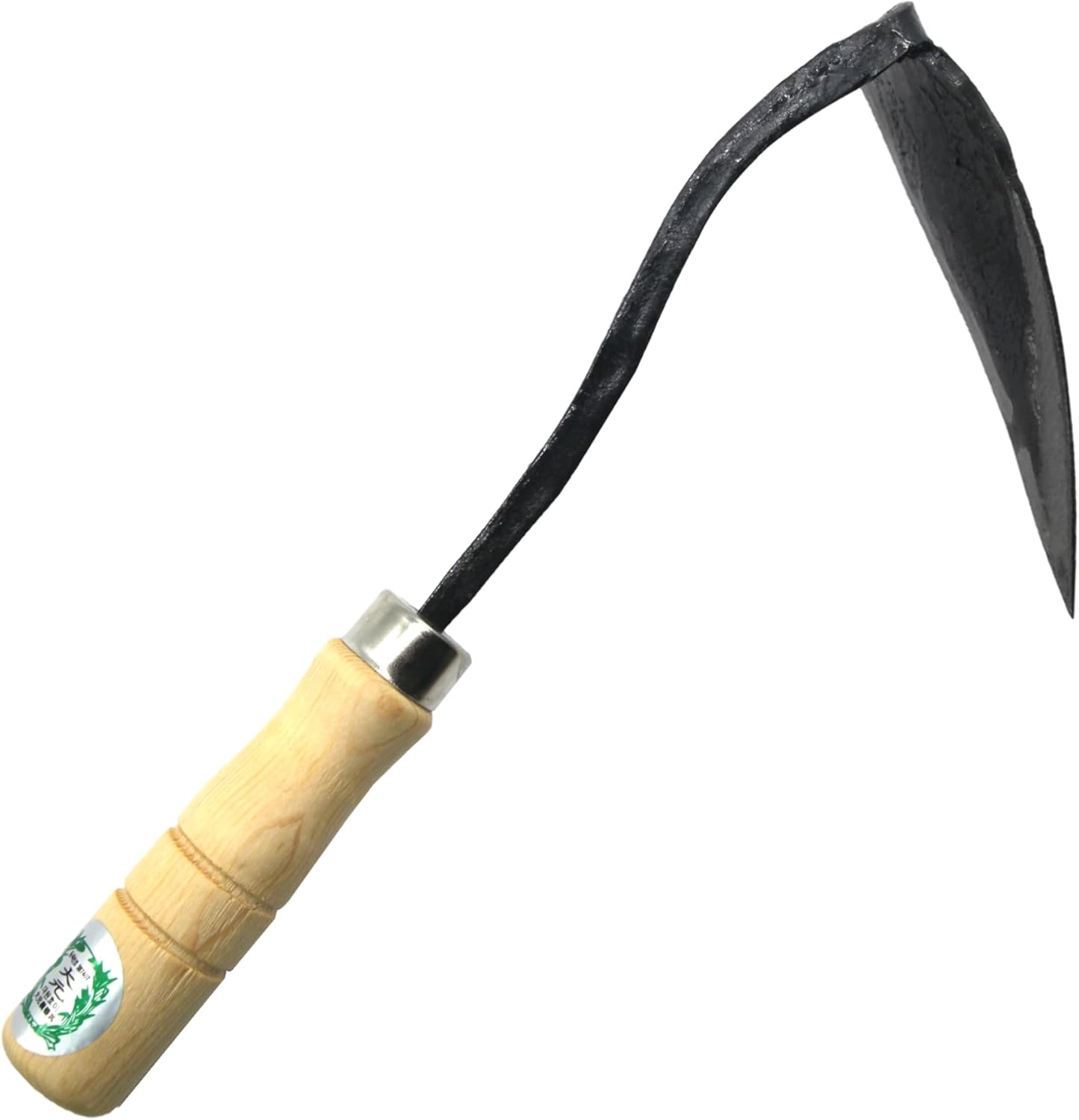
Ho-Mi Digger - Korean Triangle Blade
Fine Gardening receives a commission for items purchased through links on this site, including Amazon Associates and other affiliate advertising programs.


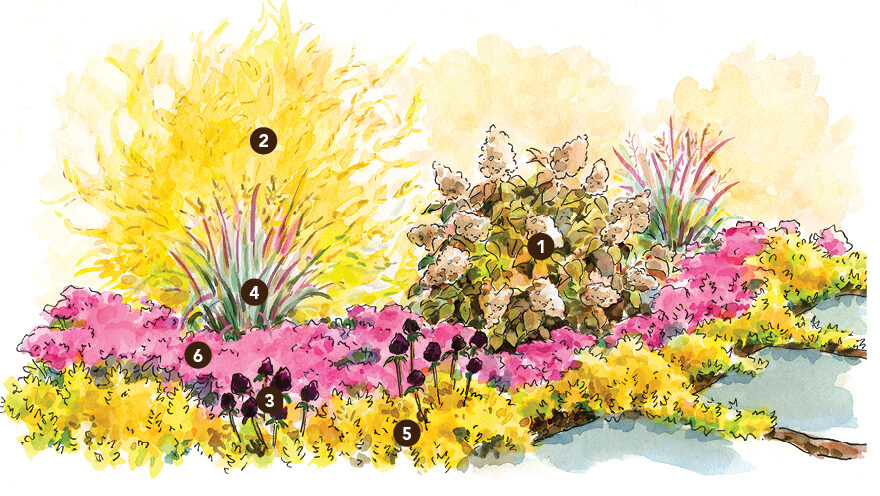
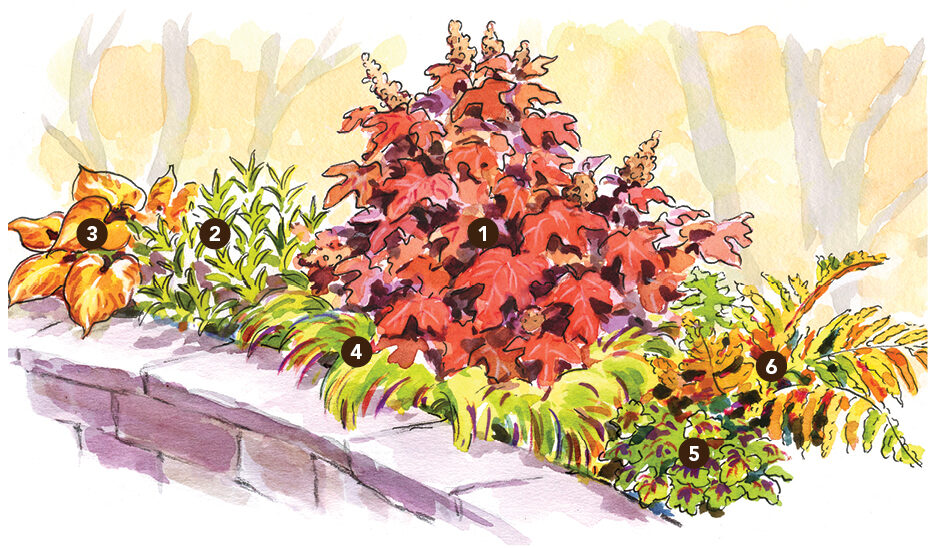
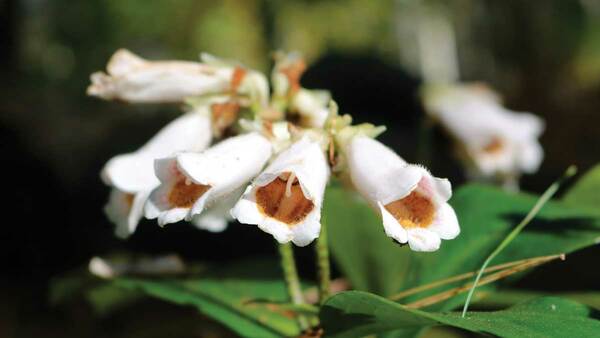
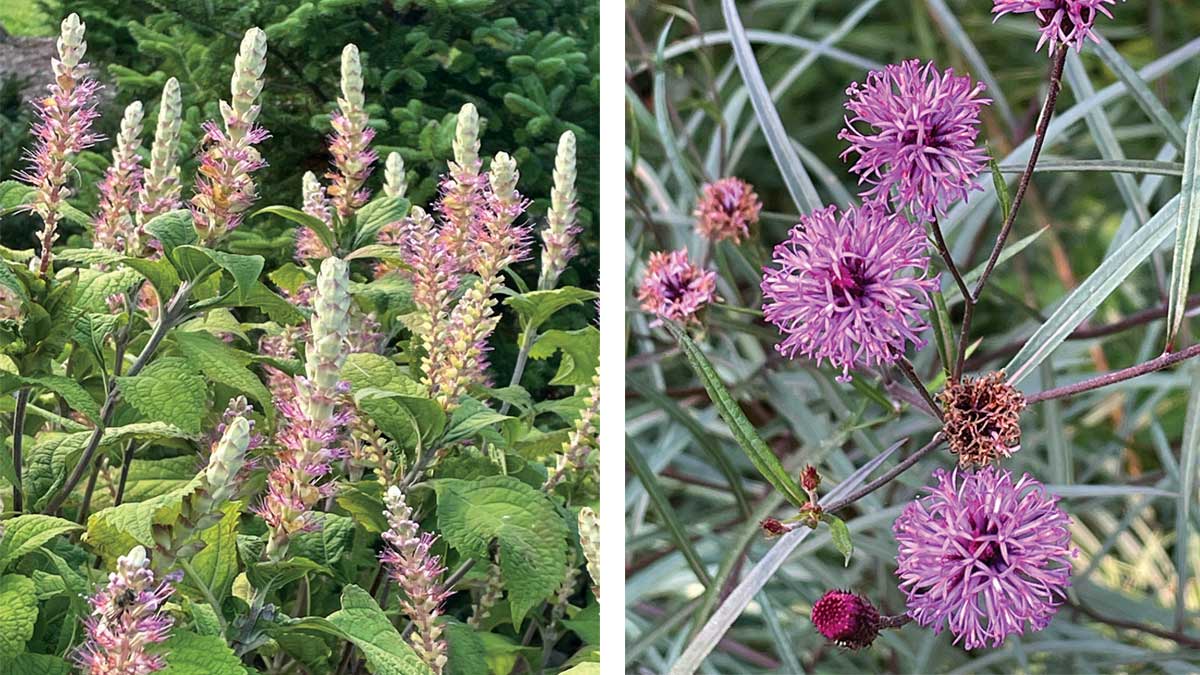
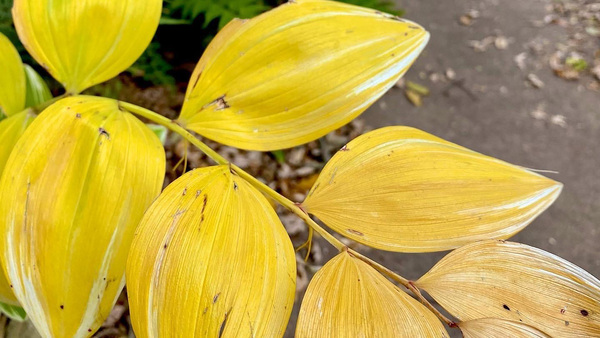
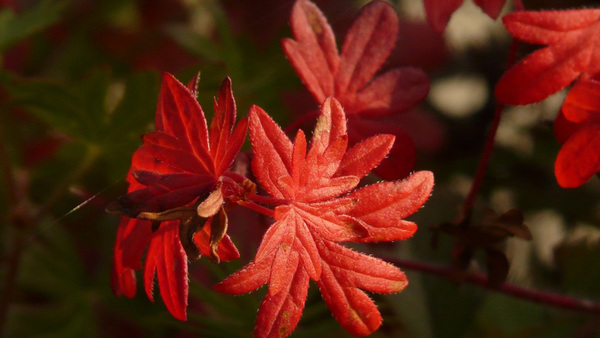
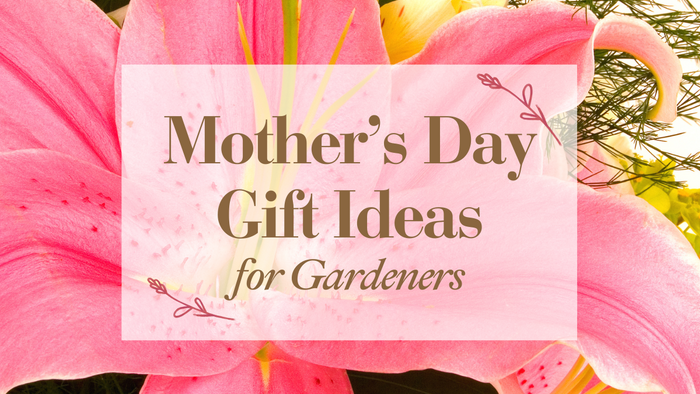

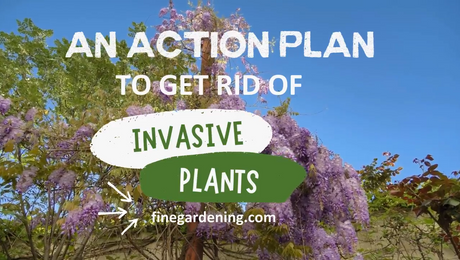










Comments
Log in or create an account to post a comment.
Sign up Log in